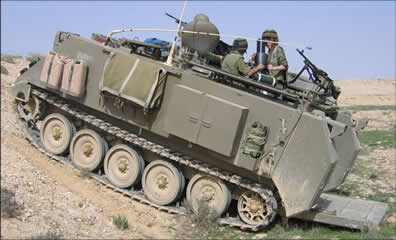
Precision munitions are used in situations where accurate target coordinates can be obtained, and the type of target can be pinpointed for the attack. Furthermore, the trajectory correction maneuvers and increased drag reduce the effective range of guided munitions below the maximum range of unguided bombs. Therefore, for different combat situations, unguided mortar bombs still offer an advantage, in covering a larger area, deploying smoke or illumination, or use suppressive fire in support of friendly forces. Dramatically accelerating the rate of fire, both first-round and volleys, Elbit Systems has developed an ‘automated version’ of the advanced mortar system known as Cardom, developed by Soltam, one of the recent acquisitions of Elbit Systems.

Cardom provides the baseline weapon-kit for the fire support vehicles of the U.S. Army Stryker Brigades. In the Israeli Army, Cardom was utilized with a new, self-propelled mortar carrier based on the BAE Systems M-113A3 platform. The system, known by its IDF designation ‘Keshet’, has been integrated with a fully automatic mortar, aiming and fire control system, reducing the mortar CEP below 33 meters, while increasing the effective range beyond 7,000 meters.
Associated with advanced fire support and target acquisition systems, both linked to the IDF digital Army system ‘Zayad’ the ‘Keshet’ is now fielded with IDF infantry brigades and will soon deploy with the IDF reserve component. The effectiveness and accuracy of the system was praised by members of the IDF experienced with the system, although the deployment was not bug free, since the association of automated targeting and indirect fire, while dramatically reducing response rate, and increasing hit accuracy, thus enabling mortars to aim closer to the supported troops.
On the far end, reducing safety margins increases the risk of fratricide, due to navigation or orientation errors by the supported unit, or other errors associated with faulty position reporting, as reflected in a fatal fratricide event earlier this year.




















